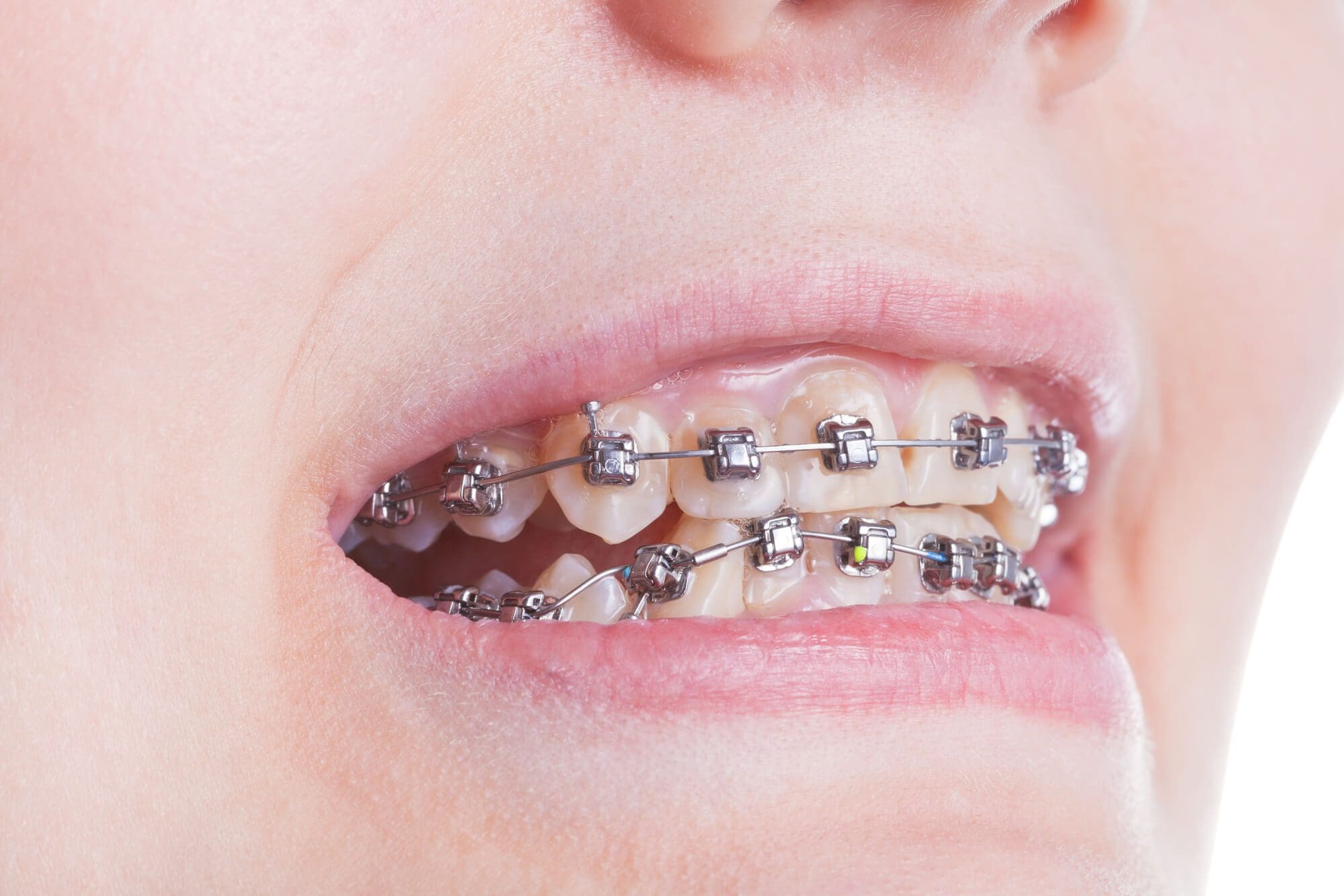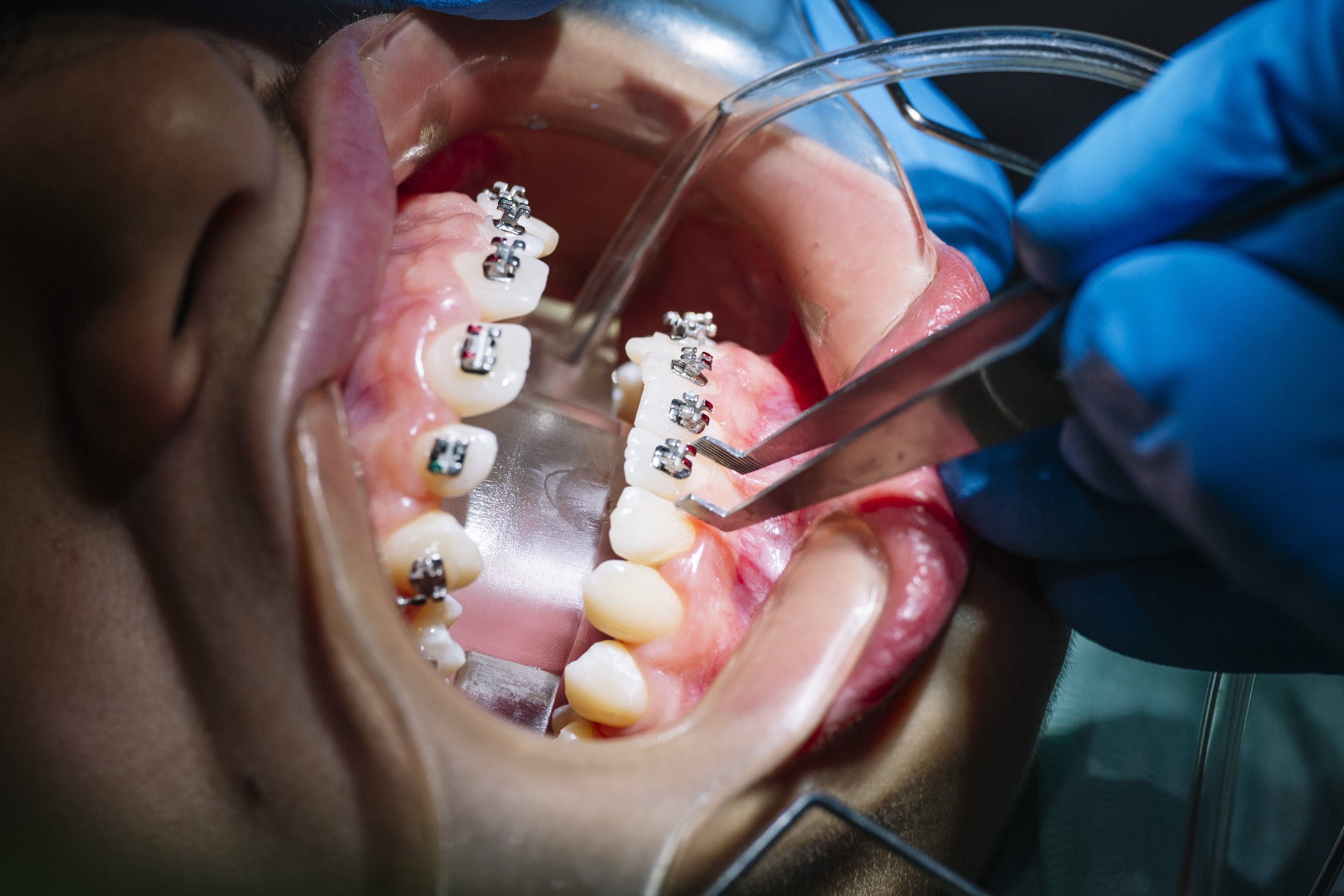Posted on May 8, 2024

Have you ever looked at braces and wondered how those tiny bits of metal and wire can transform a smile?
Braces are not just for show; they’re powerful tools that gently push and pull your teeth into the right spots. This process isn’t quick—it takes time and precision to make sure every tooth ends up exactly where it needs to be for that perfect smile.
At Smilebliss, we’re experts in guiding your teeth into alignment using braces. Understanding how braces work can make the journey to a new smile even more exciting.
If you’re curious about getting braces or just want to know more about the process, contact Smilebliss today and let us help you achieve the smile you’ve always wanted.
Orthodontic treatment involves the correction of misaligned teeth and jaws. The goal is to improve functionality and overall dental health. Braces, a common orthodontic device, use sustained pressure to gradually move teeth into the desired position.
Braces consist of several components:
The pressure exerted by the archwire is key to tooth movement. It triggers bone remodeling, where bone around the teeth breaks down and rebuilds. This process allows teeth to shift into alignment over time.
Orthodontic treatment has two phases:
Treatment duration varies from one individual to another, usually lasting one to three years. It depends on the complexity of the corrections and the patient’s response to treatment.
Patients must maintain oral hygiene and attend regular appointments for adjustments. This ensures the effectiveness of the treatment and health of the teeth and gums.
Note: While braces are commonly associated with cosmetic improvements, their benefits extend to improved oral functions and prevention of long-term dental issues.
Traditional braces are an orthodontic apparatus designed to correct dental alignments through sustained pressure over time. This system comprises several components, each with a specific role in the movement of teeth.
 Brackets act as the anchor points for braces on each tooth. They are typically made of stainless steel or ceramic materials and are bonded directly to the tooth’s surface.
Brackets act as the anchor points for braces on each tooth. They are typically made of stainless steel or ceramic materials and are bonded directly to the tooth’s surface.
Brackets have small hooks or slots where the archwire is threaded, allowing the transfer of pressure to the teeth.
The archwire is a thin metal wire that runs across the brackets, serving as a track to guide the movement of teeth. It is responsible for most of the corrective pressure and is shaped to reflect the orthodontist’s desired alignment of the patient’s teeth.
Also known as o-rings or elastic bands, ligature elastics are small bands that secure the archwire to the brackets. They are routinely changed during orthodontic visits since they wear out over time. Ligature elastics also come in various colors, allowing for customization.
Orthodontic bands are metal rings placed around the patient’s back molars and are utilized when additional strength is needed for the braces. They provide a firm anchor for other components of the braces, including the archwire, and assist in the exertion of necessary pressure for teeth movement.
The biomechanics of tooth movement are primarily concerned with how braces apply forces to teeth and the bodily processes that allow for their controlled movement within the jaw.
When braces exert force on teeth, they create two zones in the periodontal ligament: a pressure zone and a tension zone.
On the side where the brace pushes, pressure compresses the ligament, whereas the opposite side, where the tooth is being pulled away, experiences tension, stretching the ligament. This phenomenon sets the stage for bone remodeling by signaling cellular responses within the tissues surrounding the tooth.
The bone remodeling process is essential to tooth movement.
The body responds to the pressure and tension created by braces as follows:
This push-and-pull dynamic allows teeth to shift gradually within the jawbone, resulting in the desired alignment over time.
The journey to a corrected smile through braces involves several distinct phases, each targeting a specific orthodontic goal.
In the initial alignment phase, the main objective is to correct crooked or turned teeth through the strategic application of pressure. Brackets are bonded to each tooth, and an archwire connects these brackets, leveraging gentle pressure to initiate movement in the desired direction.
Following alignment, the bite correction phase addresses how the upper and lower teeth meet. This stage often involves the use of a wider, stiffer archwire, and sometimes additional appliances, to adjust the positioning of the jaws and ensure a functional bite.
The final stage, spacing and gap closure, focuses on closing any unwanted gaps between the teeth. Consistent adjustments to the braces help to gradually bring the teeth together, eliminating spaces to achieve a uniform, continuous smile.
After the active phase of orthodontic treatment with braces concludes, the aftercare and retention phase commence. Its success is important in maintaining the teeth in their corrected positions.
Patients are prescribed retainers, which must be worn according to the orthodontist’s instructions. The duration and frequency of retainer use are tailored to individual needs, with some requiring full-time wear initially and transitioning to night-time only.

Maintaining retainers is crucial for hygiene and longevity.
Patients should regularly:
Patients should attend regular follow-up appointments to monitor retention and make adjustments as necessary. Orthodontists can assess the fit of the retainer and the stability of the teeth during these visits.
Failure to adhere to the retention protocol can result in a relapse, where teeth gradually shift back towards their original positions. Commitment to wearing retainers as prescribed prevents the need for repeat treatments.
Retention is indeed the safeguard that ensures the enduring success of orthodontic treatment through braces.
Braces are incredible tools in orthodontics. They might seem scary at first, but knowing how they shift your teeth can make it less intimidating. With this understanding, you’ll start to see the magic in how your smile, or anyone else’s, improves!
If you’re thinking about getting braces or already have them, Smilebliss is here to help. Our skilled orthodontists are ready to support you through the entire process.
Get in touch with us today to start loving your smile.